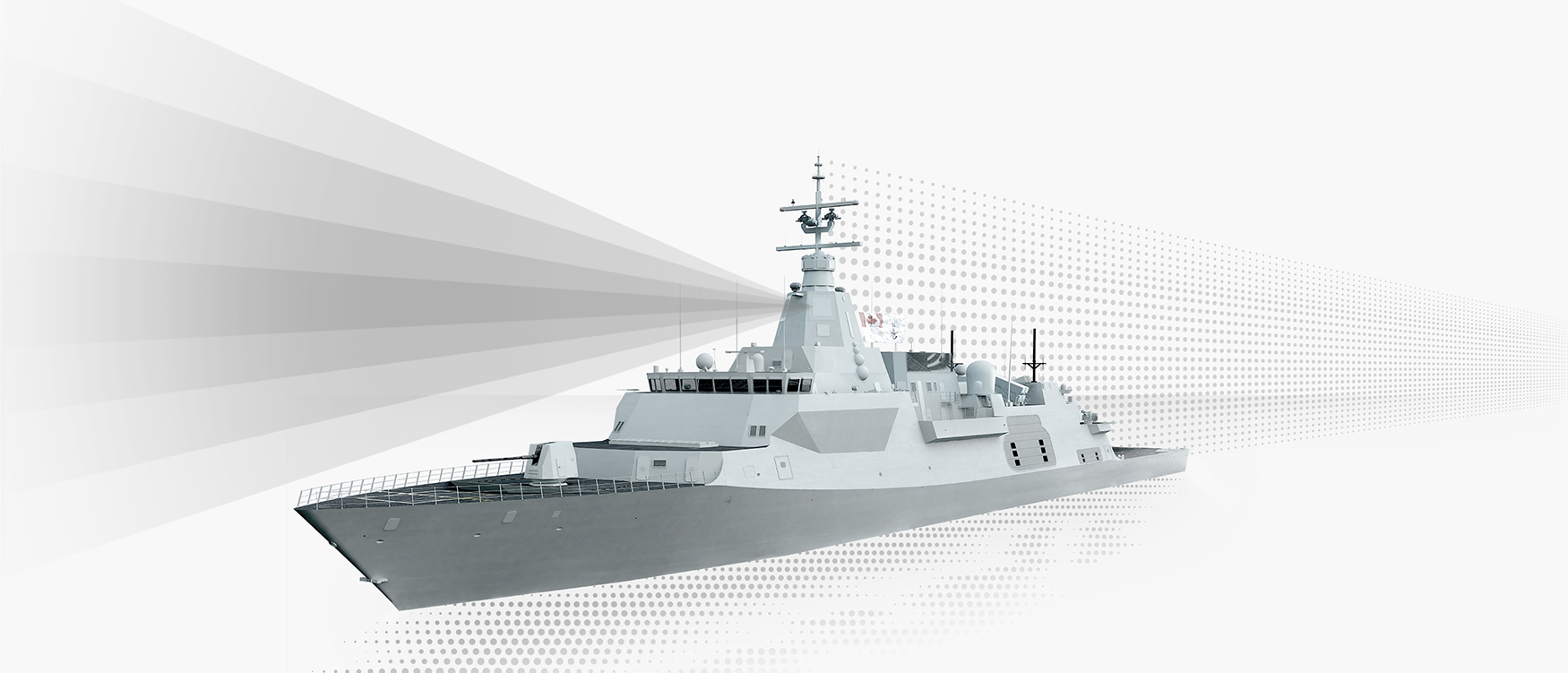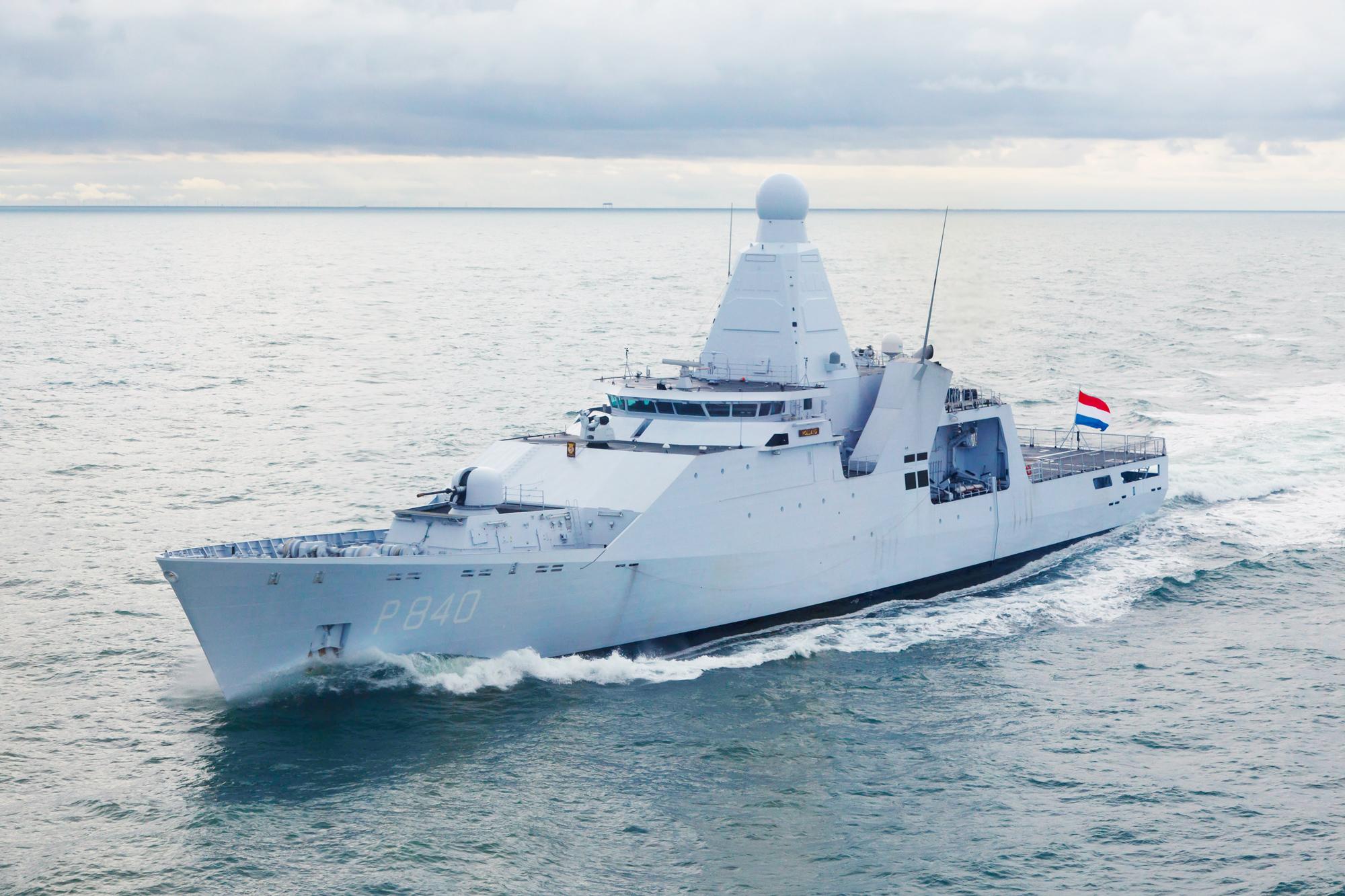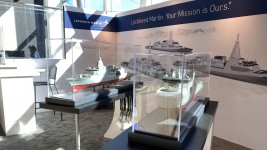You are using an out of date browser. It may not display this or other websites correctly.
You should upgrade or use an alternative browser.
You should upgrade or use an alternative browser.
Canadian River Class Destroyer Megathread
- Thread starter jmt18325
- Start date
- Reaction score
- 26,481
- Points
- 1,360
Fair enough, although methinks things are moving fast enough now that configuration control of publicly-released material may also be an issue.I’m partial to the data sheet. Why would the gov’t release specific specs only to have that change permanently again in a Lockheed rendering.?
- Reaction score
- 8,407
- Points
- 1,210
That datasheet came out right about when the PBO was releasing its evaluation of the project cost, including the other options that might have been available and their costs.I’m partial to the data sheet. Why would the gov’t release specific specs only to have that change permanently again in a Lockheed rendering.?
When you realize that suddenly everything makes more sense.
To spell it out I suspect the following. They weren't ready to release the design, but in defence of the project, they were basically forced to release what they had. This was in order to ensure the public (read government backbenchers) was informed of how their money was being spent. As the design was in flux there was potential for some change or inaccuracies, but that was deemed secondary to requirements.
- Reaction score
- 16,316
- Points
- 1,160
If there are any frameable posters of the CSC we would love to have one for our Cadet hall.
MTShaw
Full Member
- Reaction score
- 204
- Points
- 580
The cost of any design would be prohibive. It’d be cheaper now to ride around with an empty 8 pack than design it out. Also, like the FFCP, HMG is simply out of time.That datasheet came out right about when the PBO was releasing its evaluation of the project cost, including the other options that might have been available and their costs.
When you realize that suddenly everything makes more sense.
To spell it out I suspect the following. They weren't ready to release the design, but in defence of the project, they were basically forced to release what they had. This was in order to ensure the public (read government backbenchers) was informed of how their money was being spent. As the design was in flux there was potential for some change or inaccuracies, but that was deemed secondary to requirements.
- Reaction score
- 2
- Points
- 130
Hi everyone, new member here. I'm not a CAF service member or vet, but I've had a keen interest in our military for quite a while and I enjoy keeping up with procurement programs, as disappointing as they may be at times. I've been closely following the CSC program and I just came here to say that I think people are getting carried away with the VLS thing.
Lockheed Martin 3D models have always shown 24 cells, even after 32 VLS cells were confirmed on the factsheet (which btw also appears to depict 24 cells if you look closely). It seems this new model is only meant to show off the new mast design that will be housing LM's very own SPY-7 AESA. As you can see below, 24 cells is status quo for LM's 3D designs, so don't read to much into it.

Lockheed Martin 3D models have always shown 24 cells, even after 32 VLS cells were confirmed on the factsheet (which btw also appears to depict 24 cells if you look closely). It seems this new model is only meant to show off the new mast design that will be housing LM's very own SPY-7 AESA. As you can see below, 24 cells is status quo for LM's 3D designs, so don't read to much into it.

- Reaction score
- 8,407
- Points
- 1,210
Hi everyone, new member here. I'm not a CAF service member or vet, but I've had a keen interest in our military for quite a while and I enjoy keeping up with procurement programs, as disappointing as they may be at times. I've been closely following the CSC program and I just came here to say that I think people are getting carried away with the VLS thing.
Lockheed Martin 3D models have always shown 24 cells, even after 32 VLS cells were confirmed on the factsheet (which btw also appears to depict 24 cells if you look closely). It seems this new model is only meant to show off the new mast design that will be housing LM's very own SPY-7 AESA. As you can see below, 24 cells is status quo for LM's 3D designs, so don't read to much into it.
This is true. But if we didn't read into it this thread would be only 27 pages and way more boring!!!
The actual 3DM made of wood and plastic at shows had both 32 and 24VLS. I think the issue is we are extrapolating to the mission set and trying to see if this is a problem or not. I personally would like more VLS but I understand that the CMS is actually what fights the ship, and if that, the sensors and then the effectors are all aligned you won't need those extra 8 cells as much.
- Reaction score
- 16,316
- Points
- 1,160
Either way this ship will be a significant leap forward from the CFP's for the RCN. I suspect that we get a lot of requests to take part in Task forces and the biggest challenge is not burning out the crews. Hopefully the accommodations also improve making life at sea better for the sailor, while respecting Damage Control needs.
- Reaction score
- 8,407
- Points
- 1,210
The physical model is the old version. The image on the wall is the updated version with the mast having all the equipment after a preliminary Integrated Topside Design. I expect Lockheed will confirm the 24 VLS should they be asked.
Mast space is so premium. I also expect that there will be fore and aft navigation radars as that mast blocks nav radar LoS forward. JSS has four nav radars to get around the mast/stack LoS issues.
An example of how the physical models don't change is that the AOPS one doesn't have that particular gun and the mast arrangement is very different regarding antenna placement.
Mast space is so premium. I also expect that there will be fore and aft navigation radars as that mast blocks nav radar LoS forward. JSS has four nav radars to get around the mast/stack LoS issues.
An example of how the physical models don't change is that the AOPS one doesn't have that particular gun and the mast arrangement is very different regarding antenna placement.
- Reaction score
- 11,888
- Points
- 1,160
That mast. Is that part of the Thales Integrated Mast family?

 www.thalesgroup.com
www.thalesgroup.com

Integrated Mast
The Thales Integrated Mast consists of a housing that accommodates all major radars, sensors and antennas of a naval vessel. It will change the appearance of naval vessels. Gone are the dozens of antennas and sensors found on practically every flat topside surface of a modern naval vessel. The...
The radars in the Integrated Mast are non-rotating, four-faced active phased array radars, which in itself is a major performance enhancement. As the four faces operate simultaneously, the radars achieve four times the time on target achieved by a rotating radar. The surface surveillance radar (Seastar) was developed especially for this purpose and it is capable of detecting and tracking small objects (e.g. divers' head) between the waves, contributing enormously to situational awareness in littoral environments.
All systems are installed in the Mast by Thales in Hengelo. Subsequently the Mast is tested as one system. Not before it fully complies with the customer's specifications is it transported to the shipyard. There, the Integrated Mast is simply bolted or welded to the ship, hooked up to the power supply, coolant system and data transmission and is operational in only two or three weeks time. Compared to the one year that is necessary to install, integrate and test all the separate systems, this is a huge time and money saver, for Navy as well as shipyard.
A further aspect that reduces costs is the decrease of maintenance. Not only do non-rotating radars require far less maintenance, but the little maintenance that is required can be performed in the protected, sheltered environment of the Mast, meaning that it is no longer necessary to wait for repairs until weather conditions are safe enough.
The Integrated Mast is not just one product. It is a series of Masts of various sizes, each one intended for a different class of naval vessel. Introduced in December 2007, the I-Mast 400 is the first member of the I-Mast family. This system will be installed on the Patrol Ships for the Royal Netherlands Navy that are presently being built The first one is scheduled to be operational late 2010. The I-Mast 100, introduced in September 2009, is the second member of the I-Mast family. This system is designed for smaller, corvette-sized vessels.
The type of systems in the Mast is completely up to the customer. Although the Integrated Mast for the Holland class OPVs for the Royal Netherlands Navy contains mostly Thales systems, it will be possible to use customer-furnished or third party systems in a Thales Integrated Mast.
- Reaction score
- 8,407
- Points
- 1,210
Nope. Not a single Thales product is on that mast. Thales was involved with the Alion bid.That mast. Is that part of the Thales Integrated Mast family?

Integrated Mast
The Thales Integrated Mast consists of a housing that accommodates all major radars, sensors and antennas of a naval vessel. It will change the appearance of naval vessels. Gone are the dozens of antennas and sensors found on practically every flat topside surface of a modern naval vessel. The...www.thalesgroup.com
The main things on that mast are the SPY-7 AESA (LMC), AESA illuminator (MBDA), RAVEN ECM (LMC), EOIR and IRST (L3), ESM (MBDA and Electronica).
- Reaction score
- 11,888
- Points
- 1,160
None of the sensors are Thales. Understood.
On the other hand the design, assembly and construction appear to the untutored eye to incorporate a lot of the same design concepts and elements.
Are other companies building bolt on integrated modular masts?
On the other hand the design, assembly and construction appear to the untutored eye to incorporate a lot of the same design concepts and elements.
Are other companies building bolt on integrated modular masts?
- Reaction score
- 16,316
- Points
- 1,160
Similar design problems, result in similar solutions I suspect.
TangoTwoBravo
Army.ca Veteran
- Reaction score
- 3,764
- Points
- 1,110
How many of those model ship can we buy? Fill up the Theodore Tugboat set with them and intimidate the world with imagery of our might!
I will show myself out of the thread.
How many of those model ships can we buy? Film them in the Theodore Tugboat set and publish the imagery to impress the world with our might!I found this on Lockheed Martin’s Twitter page. It looks like 4x8 vls but with them turned sideways On the wall art
View attachment 66721
I will show myself out of the thread.
- Reaction score
- 8,407
- Points
- 1,210
If they are to appear in Theodore they need a face, which means LMC will charge probably about a cool million for the engineering design change.How many of those model ship can we buy? Fill up the Theodore Tugboat set with them and intimidate the world with imagery of our might!
How many of those model ships can we buy? Film them in the Theodore Tugboat set and publish the imagery to impress the world with our might!
I will show myself out of the thread.
- Reaction score
- 8,407
- Points
- 1,210
Most modern masts all look like each other if you want an AESA radar in them. It limits your design space significantly. The reason US masts for example look different is that they don't have the SPY radar on the mast, it's part of the superstructure.None of the sensors are Thales. Understood.
On the other hand the design, assembly and construction appear to the untutored eye to incorporate a lot of the same design concepts and elements.
Are other companies building bolt on integrated modular masts?
As far as bolt on integrated I don't know. Thales really only sold that mast to the Netherlands and no one else. An integrated mast is great for the sensors that it comes with. As you can see from the CSC its got multiple sensors and effectors that needed to be integrated into it. This means a custom job is a much better solution.
Similar threads
- Replies
- 0
- Views
- 10K
- Replies
- 15
- Views
- 50K
- Replies
- 61
- Views
- 104K



